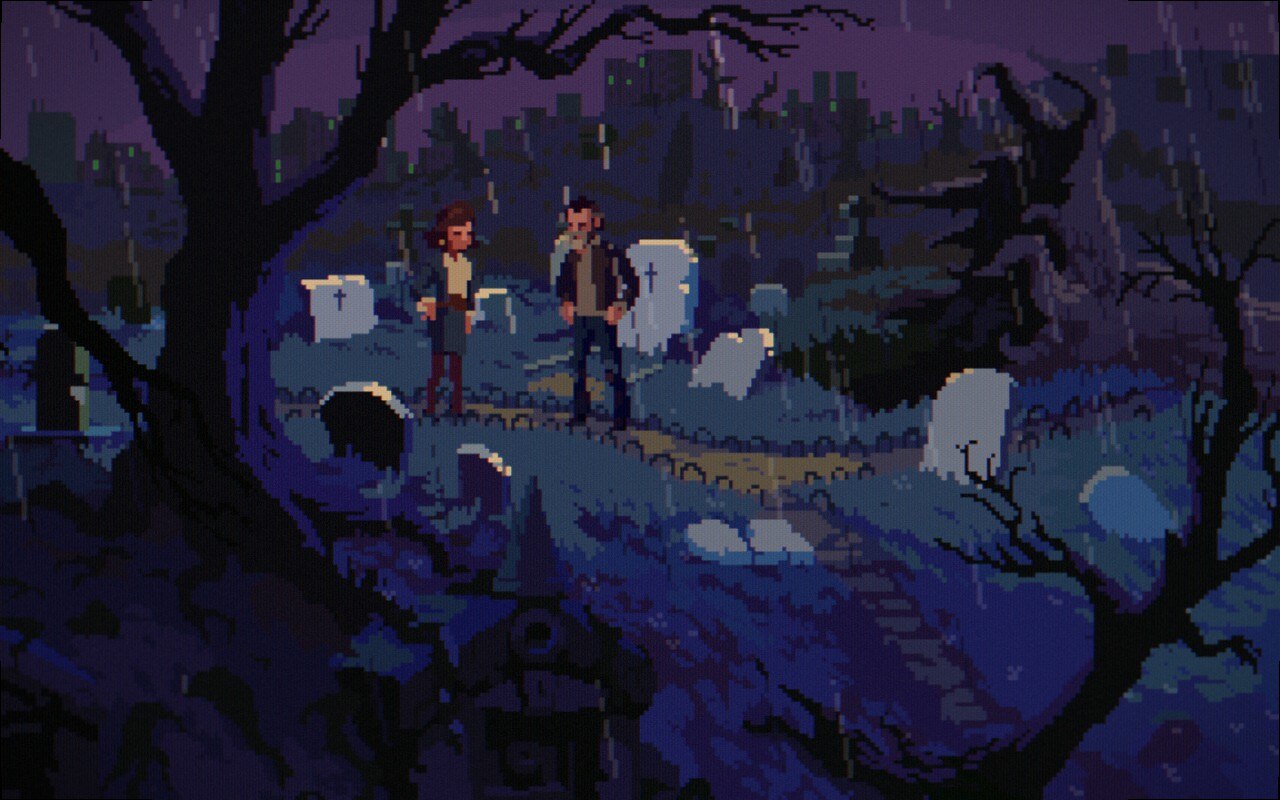Here's 25 minutes of gameplay from The Division 2
Watch us battle through Washington DC to conquer control points and complete missions in the opening hours of the game.
Your base of operations in Tom Clancy's The Division was a post office. It was one hell of a post office, to be sure: The James A. Farley Building in Manhattan is a grand and beautiful historical building occupying two square blocks in New York City. But ultimately, it's still a post office, and that's simply not going to stack up against your HQ in The Division 2, which which is nothing less than damn The White House itself. Tough to beat that for pomp and circumstance.
At an event in San Francisco last week, I got to play a few hours of The Division 2, beginning with the opening mission in which players will have to fight their way to the steps of the White House, which will be, similar to your HQ in The Division, a place for you to upgrade over time, adding NPCs like vendors who will allow you to unlock new skills and weapons, plus a home base to restock and stash extra gear between missions.
With the White House unlocked, I set out into the ruins of DC with three other players as a squad, and we tackled several missions and open world objectives together in one portion of Washington DC: the same area and missions that will be available beginning February 7 in The Division 2's beta. Above, you can watch about 25 minutes of combat footage from the event, from taking control points to battling bosses in campaign missions and open world challenges. Some written impressions and clips are below as well.
Meanwhile, Samuel's got The Division 2's endgame covered, including specializations, signature weapons, and the powerful new faction that arrives once you've completed the campaign.
The Division 2 is set months after the original battle for Manhattan. The smallpox crisis is over, but the nation's capital has crumbled and is in the grip of several different armed factions. Caught in the crossfire are citizen survivors who have been fighting to stay alive in small, ramshackle settlements. There are a number of such settlements in DC, and once you arrive and clear out the nearby bad guys you're able to revisit these settlements to acquire new missions, visit vendors, and donate supplies and resources you've found.
Liberating and aiding settlements also gives you backup when you're completing open world missions. In battle, you can fire off a flare gun and armed settlers you've helped in the past will show up to provide assistance in your fight. After liberating a settlement on our first mission, I called in support a few times, and while it never felt like the settlers were doing a heck of a lot to turn the tide (they can't revive you if you're down, for example), at the very least they provide your enemies a few extra targets. I also imagine that seeing a settlement improve and grow over time will—just like your White House HQ as it grows and expands—give you a feeling that you're actually having some impact in the world beyond just shooting the parade of bad guys and acquiring new gear.
As far as shooting all those bad guys: I'd heard from a few people who attended an earlier Division 2 event in December that the AI enemies felt a bit less like bullet-sponges than the enemies in the original game. I recall in original The Division emptying entire magazines into gang members who were wearing sweatshirts and jeans and watching them essentially shrug it off. In the Division 2, I wouldn't say that's really changed all that much: enemies comparable to your level still absorb a pretty ridiculous amount of damage before they drop. At least now they look a bit more like they can take it. The Hyenas, the paramilitary faction we mostly faced in this session, are pretty heavily armored, a far cry from the plainclothes gang members encountered in the original's early game. You're still going to have to pour a heck of a lot of lead into them, though.
Keep up to date with the most important stories and the best deals, as picked by the PC Gamer team.
Feedback feels a bit stronger than I remember from the original. You really can tell when your bullets are connecting: enemies falter and stagger, a nice red x flashes in your reticle and the sound of your bullets hitting are clear and unmistakable in your headphones. A flash of XP pops up when an enemy is killed, making sure you know you've eliminated a target even when a fight is taking place in near darkness or at a great distance.
The feedback is especially good when taking on heavily armored tank-style bosses, whose protection needs to be shredded away piece by piece. The audio cues (you should be able to hear them if you turn on sound in the gif above) means you can tell when you're hitting the armor, and there's a distinct sound when a portion of their protection shatters and falls away. Visually, it's easy to make out when the boss has lost his chestpiece and arm protection so you can really tell when you're making progress.
The streets of DC are also strewn with control points, strategic zones inhabited by factions than can be conquered, and then immediately need defending as enemy reinforcements arrive. It's probably my favorite of the open world activities, first fighting your way into the control point, then quickly bracing against the waves of baddies invading it. It also gives you a chance to use any mounted guns the bad guys have placed, which is an incredibly satisfying and effective way to mow down the incoming supplemental mobs and any fresh bosses who have arrived.
There were only a couple of skills available to us during most of the sessions: turrets, drones, and the rollermine. The turrets can be placed or thrown and can fire bullets or launch mortars, and I didn't really get much out of them. I'm not sure about the other factions, but The Hyenas weren't particularly prone to staying in one place, so setting up a turret in one spot often proved a bit useless as the enemies scattered, charged, or flanked. I also played a bit with the drones, which can hover above defending you (or a teammate) or be sent out over the battlefield to carpet bomb enemies along a path you indicate, and again, by the time you select the turret's path the enemies you where hoping to annihilate may have cleared out of it.
I guess still prefer the simple rollermine set to airburst, wheeling away into the fray to detonate any bad guys who aren't fleet-footed enough to get out of the way, and the mine seemed to reach its target zone much more quickly than the other skills. One sidenote that occurred to me during the session: after playing Anthem last weekend, it's hard not to hate how damn long it takes The Division 2's skills to cool down so they can be used again. In Anthem, abilities recharge almost immediately, in The Division 2, the fight can be over long before you get a chance to activate them a second time.
I'm not certain how much the player movement system has been changed since the original Division, and it's been quite a while since I played, but cover felt much stickier in The Division 2, to the point where I occasionally felt a struggle while trying to disengage from it. I first thought some of the awkwardness might have been in how my keys were bound—using Ctrl to go over something and Space to crouch behind something took some getting used to since I normally associate Ctrl with crouching and Space with jumping—but even by the end of the session I still felt like I was too often getting wedged behind cover even while trying to leave it.
With only a couple of hours to shoot and loot in the streets and buildings of DC, there wasn't much time to spend doing the other main activity in The Division 2: standing in your base comparing the various weapons and gear you've picked up in an attempt to create the most effective loadout and talent combination. That's not really something that can be dissected in the space of an afternoon, but we'll be getting more time with The Division 2 when the beta begins on Thursday.

Chris started playing PC games in the 1980s, started writing about them in the early 2000s, and (finally) started getting paid to write about them in the late 2000s. Following a few years as a regular freelancer, PC Gamer hired him in 2014, probably so he'd stop emailing them asking for more work. Chris has a love-hate relationship with survival games and an unhealthy fascination with the inner lives of NPCs. He's also a fan of offbeat simulation games, mods, and ignoring storylines in RPGs so he can make up his own.

